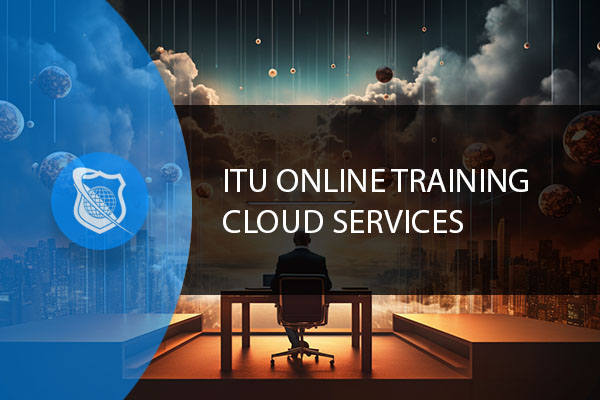What is Zoning Policy in IT Cloud Services?
Definition: Zoning Policy in IT Cloud Services A zoning policy in IT cloud services refers to a framework or set of rules that dictate how data, workloads, and resources are

Hypervisors, also known as Virtual Machine Monitors (VMMs), are a fascinating piece of technology that allows multiple operating systems to share a single hardware host. This technology is the backbone of virtualization and is crucial in cloud computing, enabling efficient resource utilization and system management.
Hypervisors provide a layer of abstraction between the hardware and the operating system. They allow multiple ‘guest’ operating systems to run concurrently on a host machine, treating resources like CPU, memory, and storage as a pool that can be dynamically allocated to each guest OS.
There are two main types of hypervisors, each with its distinct architecture and use cases:
This comprehensive training series is designed to provide both new and experienced network administrators with a robust skillset enabling you to manager current and networks of the future.
Hypervisors work by taking requests from the guest operating systems and translating them into the appropriate hardware instructions. This process includes:
Hypervisors are widely used in various scenarios, including:

Your career in information technology last for years. Technology changes rapidly. An ITU Online IT Training subscription offers you flexible and affordable IT training. With our IT training at your fingertips, your career opportunities are never ending as you grow your skills.
Plus, start today and get 30 days for only $1.00 with no obligation. Cancel anytime.
While hypervisors offer numerous benefits, there are challenges and considerations to keep in mind:
The choice of a hypervisor depends on various factors including performance requirements, budget constraints, infrastructure compatibility, and specific use cases. Let’s examine the most well-known server and software virtualizations.
Pros:
Cons:
Ideal Use Case: Best suited for large enterprises requiring a robust, feature-rich environment and those who can afford the investment in licensing and training.
Pros:
Cons:
Ideal Use Case: Ideal for small to medium-sized businesses heavily invested in the Microsoft ecosystem and for environments where Windows is the primary operating system.
Pros:
Cons:
Ideal Use Case: Well-suited for organizations looking for an open-source solution, and those with graphics-intensive virtual workloads.
Pros:
Cons:
Ideal Use Case: Best for individual users or small businesses looking for a simple, cost-effective solution for development or test environments.
Pros:
Cons:
Ideal Use Case: Best for organizations with technical expertise that require a customizable, open-source solution and are heavily invested in a Linux environment.
Selecting the right hypervisor involves balancing these pros and cons against your specific requirements and constraints. It’s crucial to thoroughly evaluate your infrastructure, performance needs, budget, and team’s expertise before making a decision.

At ITU, we offer an exclusive Cloud Computing training series designed to prepare you for certification and/or to help you gain knowlege of all Cloud based platforms including AWS, Azure and Gooogle Cloud.
Get access to this exclusive Cloud Computing Training today.
Hypervisors are a cornerstone of virtualization technology. They allow businesses and individuals to optimize hardware usage, reduce costs, and improve scalability and flexibility. As technology evolves, hypervisors will continue to play a pivotal role in the IT infrastructure, driving innovation in cloud computing, virtualization, and beyond.
The primary difference lies in their architecture and how they interact with the underlying hardware. Type 1 hypervisors, also known as bare-metal hypervisors, run directly on the host’s hardware to control the hardware and manage guest operating systems. They are known for their efficiency and are commonly used in enterprise environments. On the other hand, Type 2 hypervisors, also known as hosted hypervisors, run on a conventional operating system just like other computer programs. They are easier to set up and manage but generally offer less performance than Type 1 hypervisors.
Hypervisors are designed to keep virtual machines isolated from each other. This isolation is crucial for maintaining the security and stability of the system. However, like any software, hypervisors can have vulnerabilities. Ensuring complete isolation also requires proper configuration and regular maintenance, including applying security patches and updates to the hypervisor and guest operating systems.
Hypervisors introduce a layer of abstraction between the hardware and the guest operating systems, which can lead to some performance overhead. The impact on performance varies depending on the type of hypervisor, the workload of the virtual machines, and the configuration of the system. Type 1 hypervisors are generally more efficient and offer better performance than Type 2 hypervisors, especially for I/O-intensive applications.
Open-source hypervisors like KVM and Xen are widely used and can be just as reliable as commercial hypervisors. They are supported by large communities and organizations. The reliability often depends more on the specific use case, workload, and how well the hypervisor is maintained and configured rather than whether it is open-source or commercial.
Hypervisors play a crucial role in disaster recovery and business continuity by providing robust solutions for data protection, system backup, and recovery. With features like live migration, hypervisors allow businesses to move virtual machines from one server to another without downtime, ensuring continuous availability of applications. They also enable quick recovery from hardware failures, as virtual machines can be easily transferred or replicated to other servers. Additionally, hypervisors facilitate regular and consistent snapshotting of virtual machine states, allowing for rapid restoration to a previous state in case of data corruption or loss. This capability is essential for minimizing downtime and ensuring business operations can quickly resume after a disruptive event. By leveraging the virtualization capabilities of hypervisors, organizations can implement comprehensive disaster recovery plans, reduce the impact of outages, and maintain business continuity even in the face of unexpected incidents.
Lorem ipsum dolor sit amet, consectetur adipiscing elit. Ut elit tellus, luctus nec ullamcorper mattis, pulvinar dapibus leo.
$49.99 Original price was: $49.99.$16.99Current price is: $16.99. / month with a 10-day free trial
Definition: Zoning Policy in IT Cloud Services A zoning policy in IT cloud services refers to a framework or set of rules that dictate how data, workloads, and resources are
Definition: Backbone Network Architecture Backbone Network Architecture refers to the framework that connects various subnetworks, local area networks (LANs), or wide area networks (WANs) within an enterprise or service provider’s
Definition: Fault Tolerance Techniques Fault tolerance techniques are strategies and methodologies designed to ensure the continuous operation of a system, even in the presence of faults or failures. These techniques
Definition: Subsurface Scattering Subsurface scattering (SSS) is a phenomenon in which light penetrates the surface of a translucent object, scatters inside the material, and exits at a different point. This
Definition: Fragmentation Fragmentation is a condition in computer memory or storage where free space is broken into smaller, non-contiguous blocks, leading to inefficient use of resources and reduced system performance.
Definition: Data Normalization Data normalization is the process of organizing and structuring a database to minimize data redundancy and dependency by dividing large tables into smaller, related tables. It follows
Definition: Port Scanning and Fingerprinting Port Scanning and Fingerprinting are cybersecurity techniques used to identify open ports, services, and operating systems on a target system. Port scanning involves probing a
Definition: XSS Credential Theft XSS Credential Theft refers to the process of stealing user login credentials through Cross-Site Scripting (XSS) attacks. In these attacks, a malicious actor injects malicious JavaScript
Definition: AWS Redshift AWS Redshift is a fully managed, petabyte-scale cloud data warehouse service provided by Amazon Web Services (AWS). It enables businesses to efficiently store, process, and analyze large
Definition: Full-Stack Developer A Full-Stack Developer is a software engineer skilled in both front-end and back-end development. They have expertise in multiple technologies, including HTML, CSS, JavaScript, databases, server-side programming
Definition: Digital Forensics Digital Forensics is the process of identifying, collecting, analyzing, and preserving digital evidence to investigate cybercrimes, security incidents, and legal cases. It is a branch of forensic
Definition: Off-Page SEO Off-Page SEO refers to all the activities performed outside a website to improve its search engine rankings. It involves strategies such as link building, social media marketing,
ENDING THIS WEEKEND: Train for LIFE at our lowest price. Buy once and never have to pay for IT Training Again.